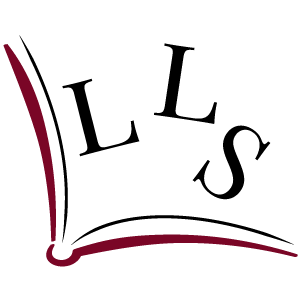
Three times I’ve taken the train down to St Ives – a region apart – for London Literary Salon Travel Studies of Virginia Woolf books: The Waves, To the Lighthouse and the last book published in her lifetime, The Years.
Woolf means a lot to me. Growing up I read her journals, just as I devoured the diaries of Sylvia Plath and Anaïs Nin to enter into the detail of these female writers’ thoughts and lives. Some of the last lines of Mrs Dalloway saw me over the threshold of turning 50: “What is this terror? what is this ecstasy? he thought to himself. What is it that fills me with extraordinary excitement?”
Travel Studies are worth going the distance for. Set against the backdrop of a place related to the book you are reading, a Travel Study makes the words come alive over time and feel shot through with new meaning.
I’d already been to Dublin with the London Literary Salon after doing a six-month study of James Joyce’s Ulysses. Because Joyce, as he proclaimed, “put in so many enigmas and puzzles that it will keep the professors busy for centuries”, the least daunting and most rewarding way to read this vast book is in the company of a group of people spearheaded by the astute, inquisitive, light-hearted, deep-diving teacher/facilitator Toby Brothers. Founder and Director of the Salon, she masterminds seminar-like discussions that are informal and in depth. Because she’s an avid swimmer, a Travel Study often incorporates swimming – in the bracing Atlantic (for The Years), in warmer Grecian waters (for The Odyssey) and off the Forty Foot promontory into the roiling Irish Sea (for Ulysses).

In Dublin on Bloomsday – which commemorates the events of 16 June 1904 described in Ulysses – we retraced characters’ steps and watched scenes played out in costume on doorsteps, in a crypt and at Sweny’s, the Dispensing Chemists (“Mr Bloom raised a cake [of soap] to his nostrils. Sweet lemony wax”).
He bought lemon soap; we bought lemon soap – and its tart scent time-travelled me back to turn-of-the-century Dublin.

That’s the thing about a Travel Study: it superimposes echoes of the book, and the life and times of the author, onto your experiences in real time. It transports you into the book and the book into the moment.
No 4 St Ives, the B&B where we’ve stayed for the Virginia Woolf Travel Studies, is a 30-second walk from Talland House, where Woolf spent 13 happy childhood summers. We stand transfixed in front of the white villa and think of how she movingly wrote in the essay “A Sketch of the Past”:
If life has a base that it stands upon, if it is a bowl that one fills and fills and fills – then my bowl without a doubt stands upon this memory. It is of lying half asleep, half awake, in bed in the nursery at St Ives. It is of hearing the waves breaking, one, two, one, two, and sending a splash of water over the beach . . . and feeling, it is almost impossible that I should be here; of feeling the purest ecstasy I can conceive.
A bit bedazzled, I keep thinking: This is the view (partially impeded, since, by houses) of the sea that she would have seen; that tide mirrors the waves she wrote about in The Waves; there’s the lighthouse from To the Lighthouse. Did the wind sound similar in these same trees? Undoubtedly she walked here, turned that doorhandle, looked through that pane of glass.
Time on a Travel Study is telescopic: it takes a while to put the workaday London world behind me, but by day two I’ve decompressed and am caught up in the escapism.
Each Travel Study is a study in work/life balance. It reminds me of the buzz I felt working at the Cannes Film Festival. Alternating schedule and spontaneity, you work, wander around, run into people, socialise, carve out some solitude.
Every day we parcel out the time: dash five minutes down to the sea for a 7am swim; join the others for breakfast; walk through the cobbled streets of whitewashed houses over to the rough-hewn, Grade II-listed Porthmeor Studios, which give on to a beach, to read aloud and discuss The Years; go our separate ways – to maybe take an open-top double-decker along the coast, tour the Barbara Hepworth Museum and Sculpture Garden or opt for downtime to catch up on reading – then reconvene to discuss the book for another hour; continue talking over dinner; sleep.
A Travel Study, which elides past and present, is a journey to the centre of many things – of how aspects of a book’s personal and political landscapes resonate when you take them in experientially, how your ideas can evolve as you hear other people’s perceptions and analysis, and the connectedness – on location – with a writer and their words.
Leah Jewett is director of Outspoken Sex Ed and an inveterate Salonista





Well said,Leah! There’s also the eateries that have been scoped ahead of time! Joining for dinner is voluntary, yet often drives one’s breakfast conversation! A salon is similar to camp except the for the food, few bugs, no “short-sheeting” pranks-instead lovely, welcoming community of dedicated to reading. I’ve participated 4times also; I even love the long train ride.